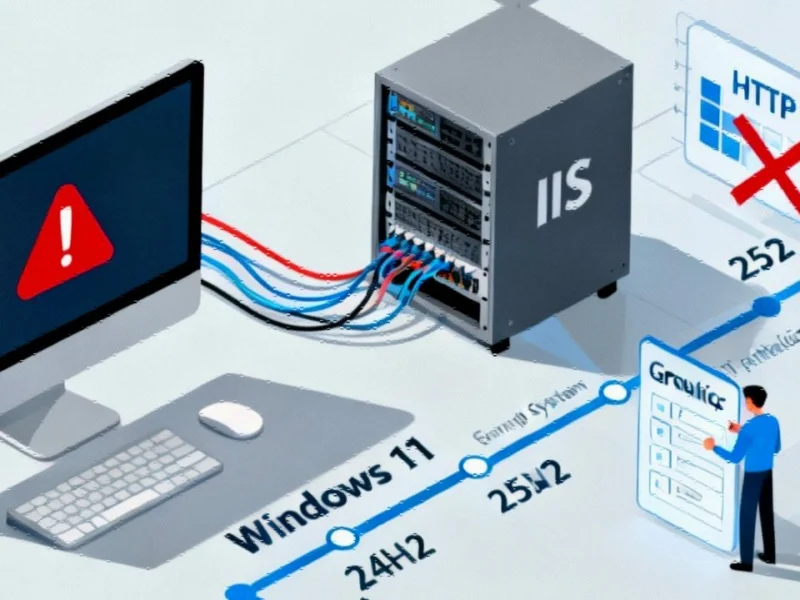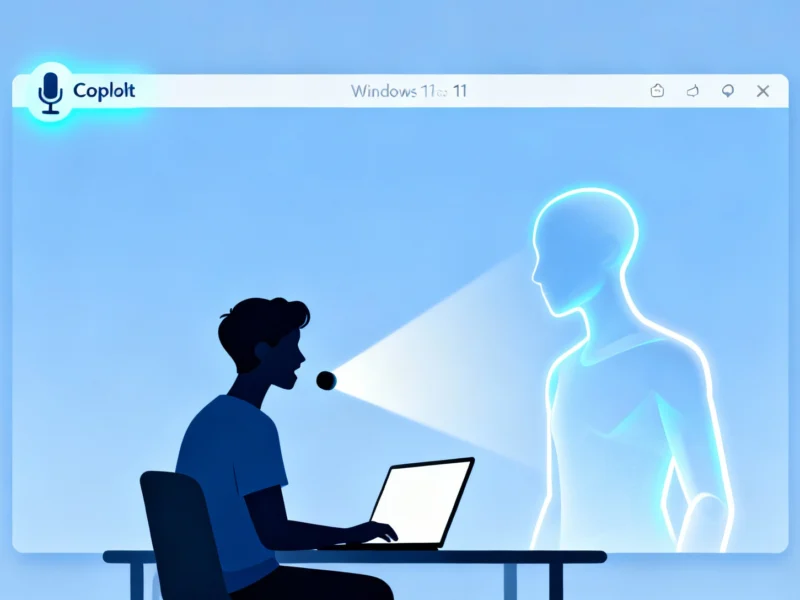The Unseen Ripple: How Windows 11 Updates Are Reshaping Web Infrastructure
In a significant development for enterprise IT environments, Microsoft has confirmed that recent Windows 11 24H2 and 25H2 updates are causing critical disruptions to IIS (Internet Information Services) websites. The technical conflict emerges from changes to the Windows HTTP stack driver (HTTP.sys), creating a cascade of connectivity issues that manifest as “ERR_CONNECTION_RESET” errors when accessing localhost loopbacks and IIS-based connections.
The situation represents a critical challenge for development teams and IT administrators who rely on stable local environments for testing and deployment. According to Microsoft’s updated Windows Release Health Dashboard, “server-side applications relying on HTTP.sys may experience issues with incoming connections,” leading to failed IIS websites or completely blank pages that disrupt workflow and productivity.
Understanding the Technical Scope and Impact
The problematic updates, including KB5066835 and KB5065789 released on or after September 29, have created a complex scenario where not all Windows environments experience identical symptoms. Microsoft notes the issue may appear under “a variety of conditions,” including differences in internet connectivity, system timing, or update installation order. This variability means some organizations might encounter immediate disruptions while others experience intermittent problems that complicate diagnosis.
For development teams, the implications extend beyond mere inconvenience. Local testing environments, which form the backbone of quality assurance processes, become unreliable, potentially delaying project timelines and increasing development costs. The situation highlights the importance of robust testing protocols before deploying system-wide updates, particularly in production environments.
Microsoft’s Response and Remediation Strategy
While Microsoft works on a permanent solution, the company has provided IT administrators with a known issue rollback (KIR) mechanism accessible through specialized Group Policy configurations. This approach effectively reverses the problematic changes without requiring a complete uninstallation of the update, preserving system security while restoring functionality.
Administrators managing Windows 11 24H2, 25H2, and Windows Server 2025 environments can access the necessary Group Policy package through Microsoft’s dedicated download portal. Once installed, the configuration appears under Computer Configuration > Administrative Templates, providing a straightforward implementation path for experienced IT teams.
This development comes alongside other significant industry developments in the Windows ecosystem, highlighting the complex interplay between system updates and operational stability.
Broader Implications for Digital Infrastructure
The HTTP.sys conflict underscores the delicate balance between security updates and system functionality in modern computing environments. As organizations increasingly rely on integrated development environments and local hosting solutions, the stability of core components like IIS becomes paramount to business continuity.
This situation also reflects wider related innovations in how technology systems interact and sometimes conflict, reminding IT professionals that even routine updates require careful consideration and testing before deployment.
Strategic Recommendations for IT Teams
Organizations affected by these IIS disruptions should consider implementing the following measures:
- Immediate Action: Apply Microsoft’s provided KIR through Group Policy to restore IIS functionality
- Testing Protocol Enhancement: Establish isolated testing environments for future Windows updates before broad deployment
- Monitoring Implementation: Increase monitoring of local development environments following update installations
- Contingency Planning: Develop rollback procedures as standard practice for all system updates
These strategic approaches align with broader market trends toward more resilient and adaptable IT infrastructure management, particularly as organizations navigate increasingly complex technology ecosystems.
Looking Forward: The Path to Resolution
Microsoft’s acknowledgment of the HTTP.sys conflict and provision of temporary remediation represents a responsive approach to update-related challenges. However, the incident serves as a reminder of the inherent complexities in maintaining massive software ecosystems where interdependencies can create unexpected consequences.
As the technology landscape continues to evolve with recent technology advancements, the relationship between system updates, development environments, and business operations will remain a critical area of focus for IT professionals worldwide. The resolution of this particular issue will likely inform future update strategies both at Microsoft and within organizations that depend on Windows-based web infrastructure.
For now, administrators have a clear path to restoration through the provided Group Policy solution, allowing development teams to return to productive work while awaiting a comprehensive fix from Microsoft’s engineering teams.
This article aggregates information from publicly available sources. All trademarks and copyrights belong to their respective owners.



